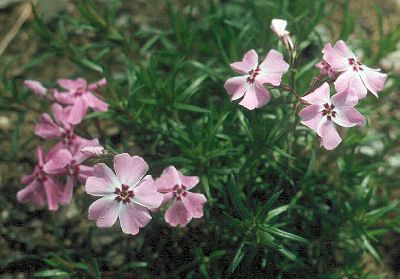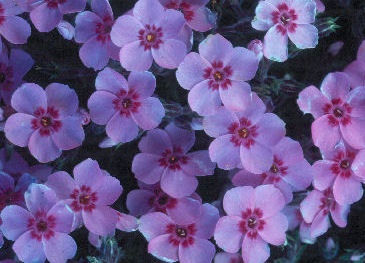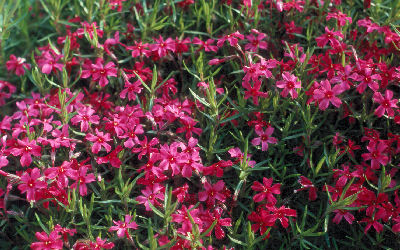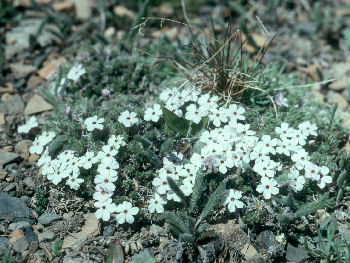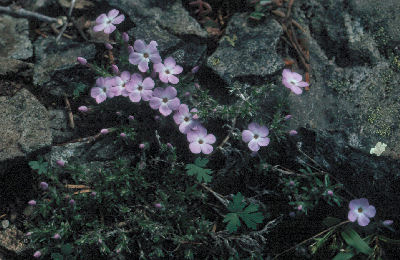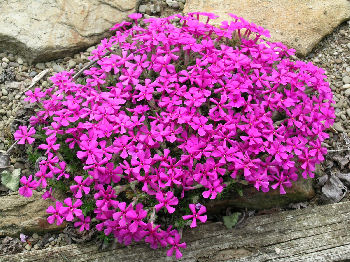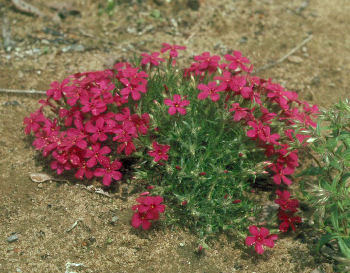Moss Phlox
These species seem to fall into a single group, although Wherry (1955)
assigned them to different groups using style length and seed size.
Some of the eastern species are well established in horticulture. The
western species are grown mainly by western and European rock gardeners, since most
of them are very difficult to impossible to grow in the eastern US.
There are a number of cultivars that are hybrids of P. subulata with
one or more of the western species. These can be grown
well with care in the East. All do best in well-drained soil
in warm sunshine.Eastern species
Phlox bifida (Sand phlox)- Range: midwestern, Michigan to Illinois south to Tennessee and Missouri. Habitat: sand hills and rocky slopes. Height: 10 to 20cm. Flower color: lavender to white. Bloom time: spring. This species has deeply cleft flower petals that give the flowers the look of a ten-point star. The foliage is larger and coarser than the other two eastern species.
'Alba' - A white-flowered selection.
'Betty Blake' - This selection has dark lavender-blue flowers.
'Starbright' - Very deeply cut petals, lavender-blue flowers.
Phlox nivalis (Pine phlox) - Range: southern Virginia to Texas on the coastal plain. Habitat: open woods on sandy soil. Height: 10 to 15cm. Flower color: purple to pink to white. Bloom time: spring. This southern species blooms about two weeks later than P. subulata. They are very similar, but can be told apart by the length of the style. If you tear the flower in half lengthwise you will see that the style is so short in P. nivalis that the stigma is at the bottom of the tube. In P. subulata the style extends out to the end of the tube. P. nivalis is an excellent garden species and has been fully hardy for us in southwestern PA.
'Camla' is an old cultivar with very large light purple flowers. The plant I have seen currently being sold under this name is a purple-flowered P. subulata or a hybrid.
'Dark Eye' has pink flowers with a darker eye. This was a seedling of 'Eco Flirtie Eyes' and was introduced by The Primrose Path in 1990.
'Eco Flirtie Eyes' has large light purple-pink flowers on a vigorous plant.
'Polly Spout' is a light pink selection introduced by We-Du Nursery in North Carolina.
'Snowdrift' is a white-flowered selection from Niche Gardens, also in North Carolina.
'Winifred' resembles 'Dark Eye,' but the flower is slightly darker pink with less crisp eye markings.
